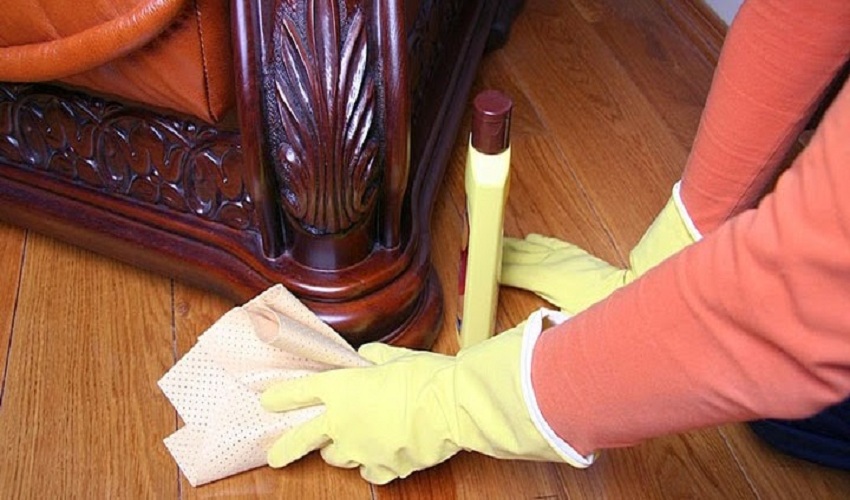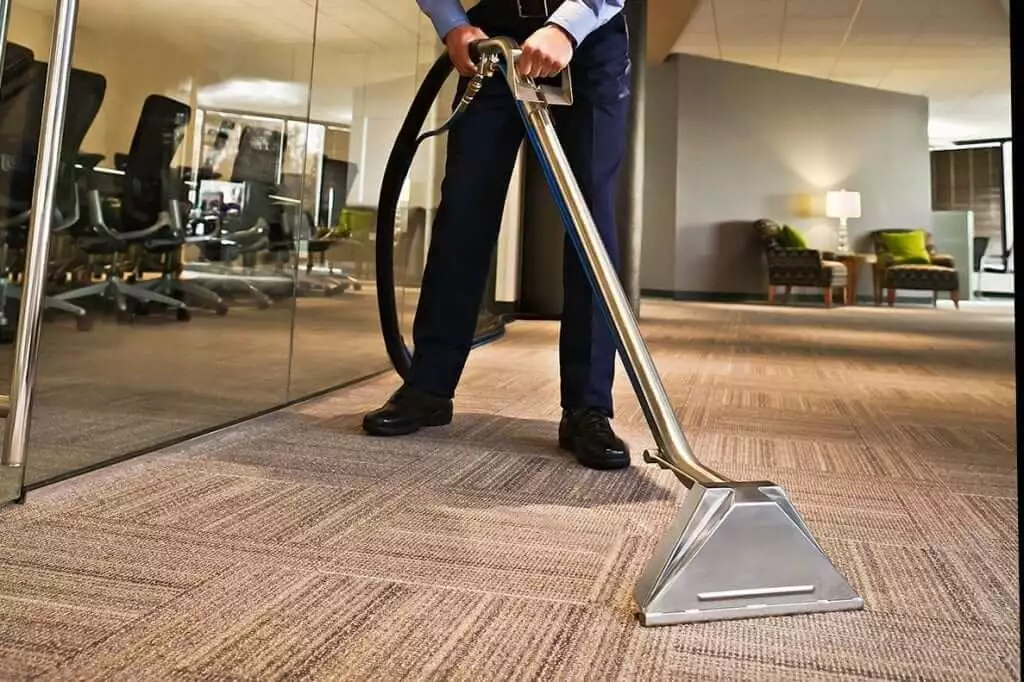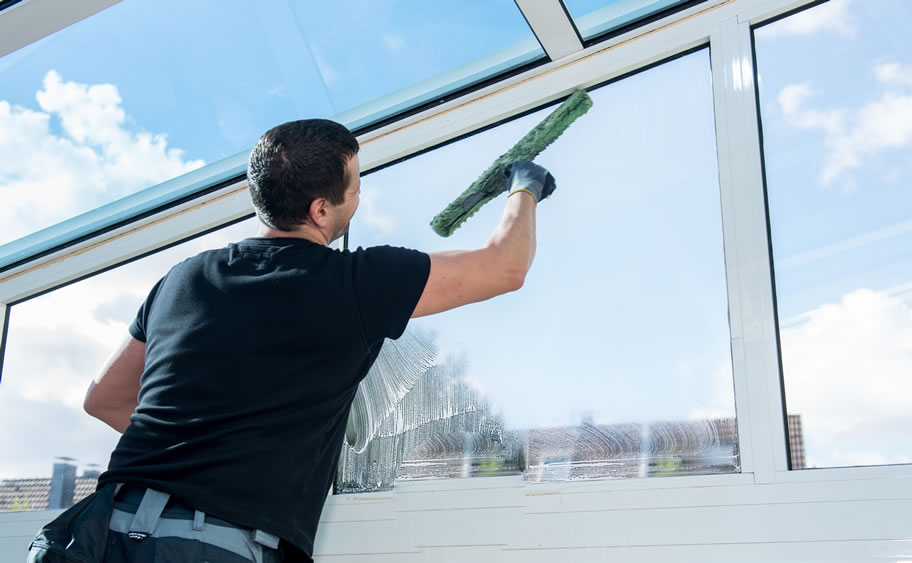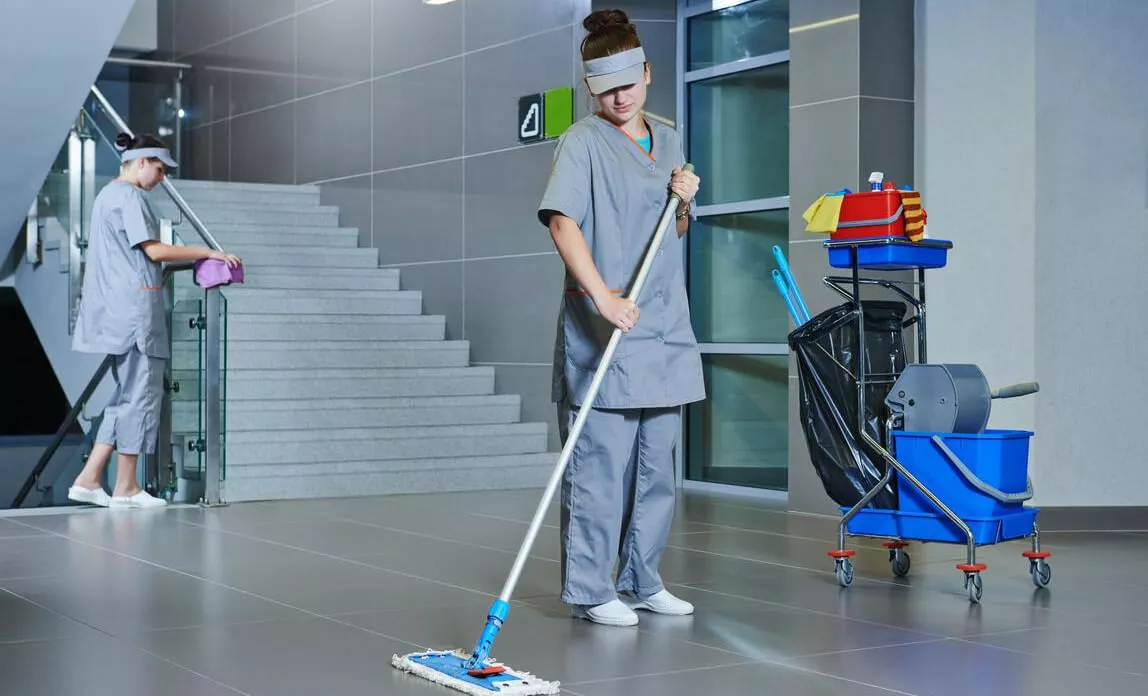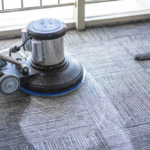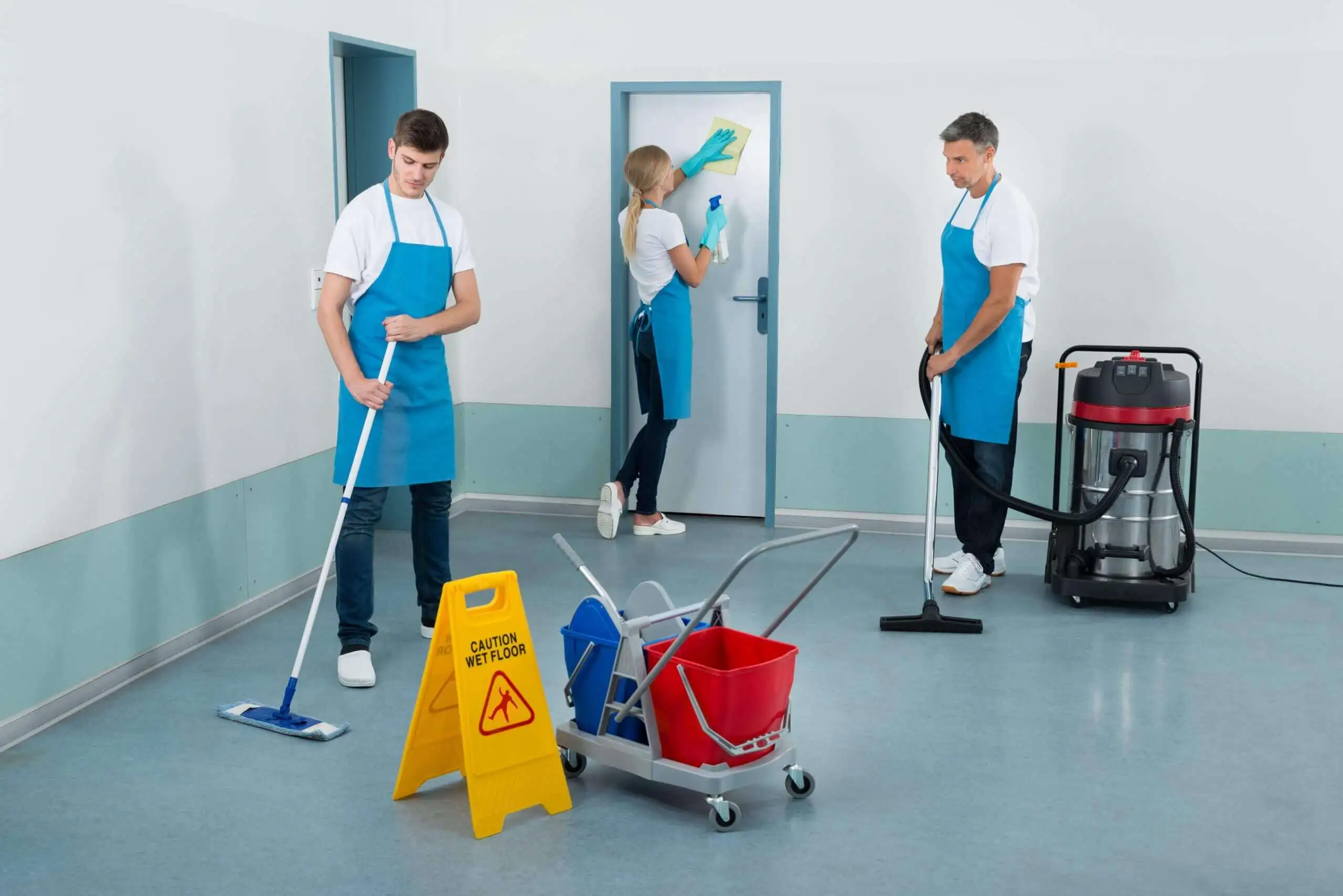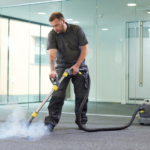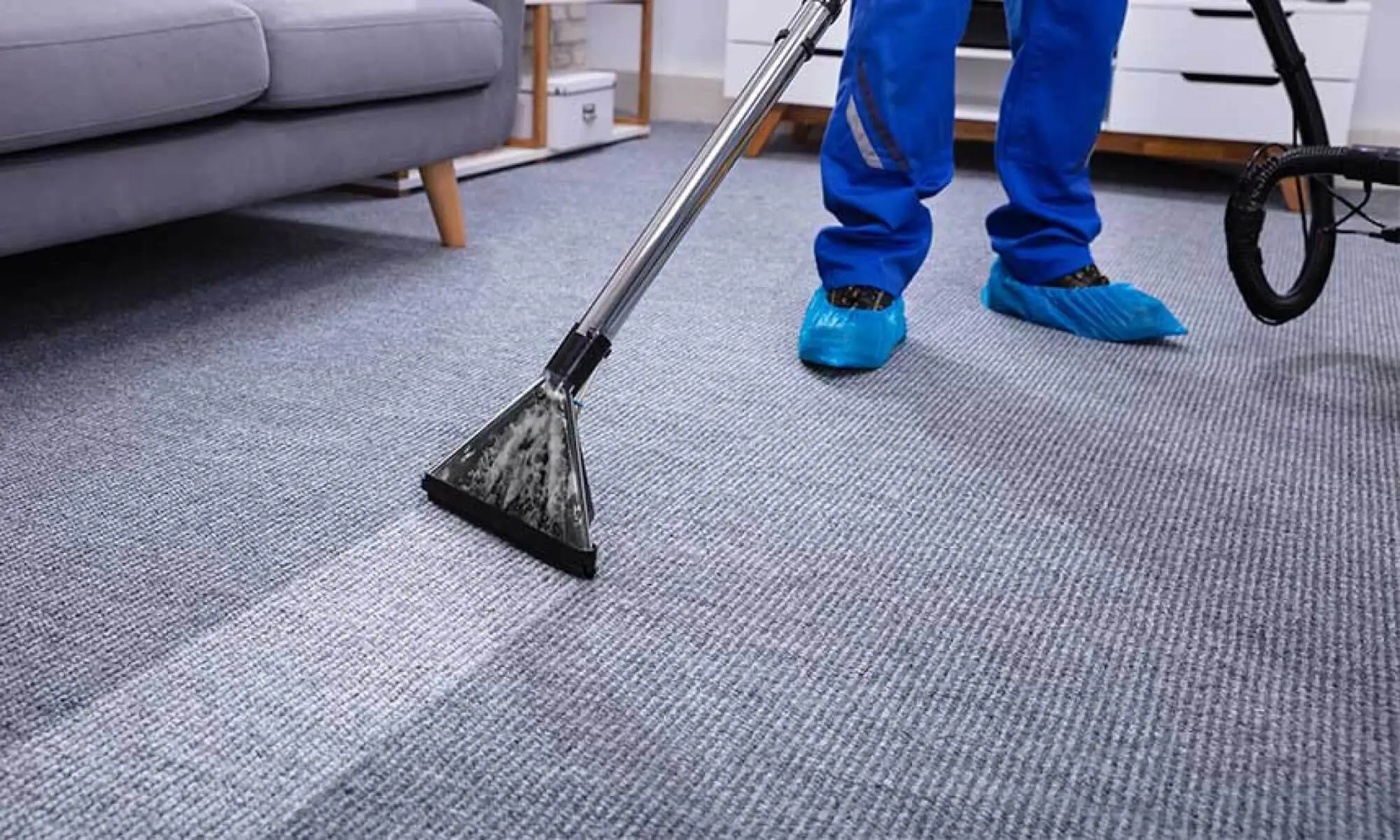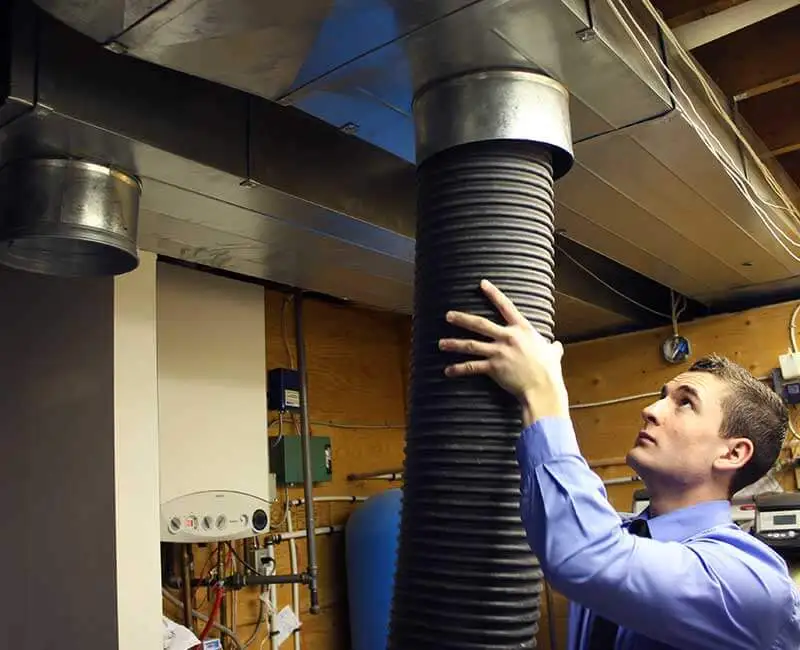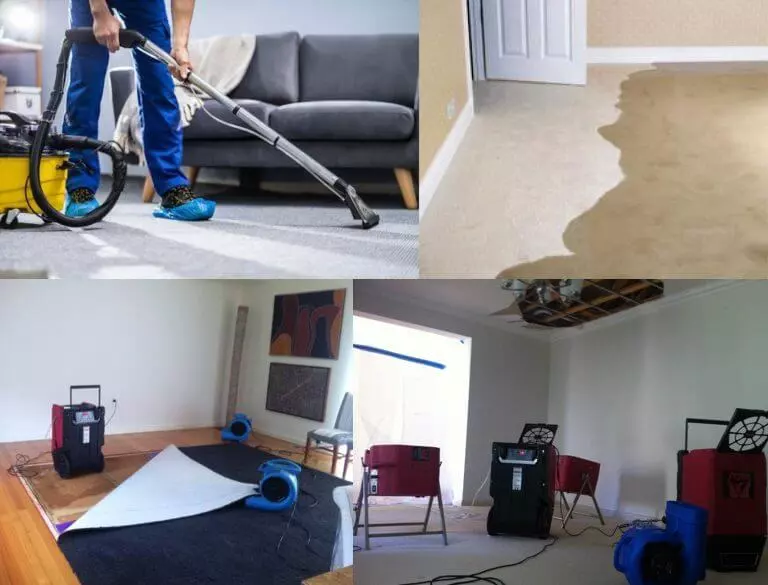Leather sofas are stylish, comfortable, and long-lasting. But keeping them clean and looking new requires the right approach. Unlike fabric, leather is more sensitive to harsh chemicals and moisture. If cleaned incorrectly, it can crack, fade, or lose its softness. In this guide, we’ll explore the best trick for cleaning leather sofa effectively, along with other tips to maintain its shine for years.

Content
Why Cleaning Leather Sofa the Right Way Matters
Leather is a natural material that absorbs oils, dirt, and spills over time. If left untreated, these can cause permanent stains and weaken the leather fibers. A regular cleaning routine helps in:
- Maintaining the sofa’s original texture
- Preventing cracks and peeling
- Extending its lifespan
- Keeping it free from dust, bacteria, and allergens
According to the Leather and Hide Council of America, high-quality leather can last over 20 years with proper care. However, improper cleaning can reduce its life by half.
Top Method for Cleaning a Leather Sofa
The most reliable way to clean a leather sofa is by using a gentle, pH-balanced solution, then applying a rich leather conditioner. This process effectively removes dirt without harming the finish and replenishes essential oils, keeping the leather soft, smooth, and well-protected.
Step-by-Step Method
1. Dust and Vacuum the Sofa
Start by removing loose dirt, crumbs, and pet hair. Use a soft brush attachment on your vacuum cleaner to avoid scratching the leather surface.
2. Make a Gentle Cleaning Solution
Mix one part white vinegar with two parts distilled water. Vinegar breaks down dirt and bacteria, while distilled water prevents mineral deposits. You can also use a commercial leather cleaner that is pH-balanced.
3. Test on a Hidden Spot
Before applying the cleaner to the whole sofa, test it on a small hidden section. This ensures it won’t cause discoloration.
4. Wipe with a Damp Cloth
Dip a microfiber cloth into the solution and wring out excess liquid. Gently wipe the sofa in circular motions to lift dirt without soaking the leather.
5. Dry Immediately
Use a clean, dry microfiber cloth to wipe away any moisture. Leather should never be left wet, as it can lead to mold or warping.
6. Apply Leather Conditioner
Finish by applying a leather conditioner with a soft cloth. This step restores natural oils and prevents cracks. Most experts recommend conditioning leather every 6–12 months.
Other Helpful Tips for Cleaning Leather Sofa
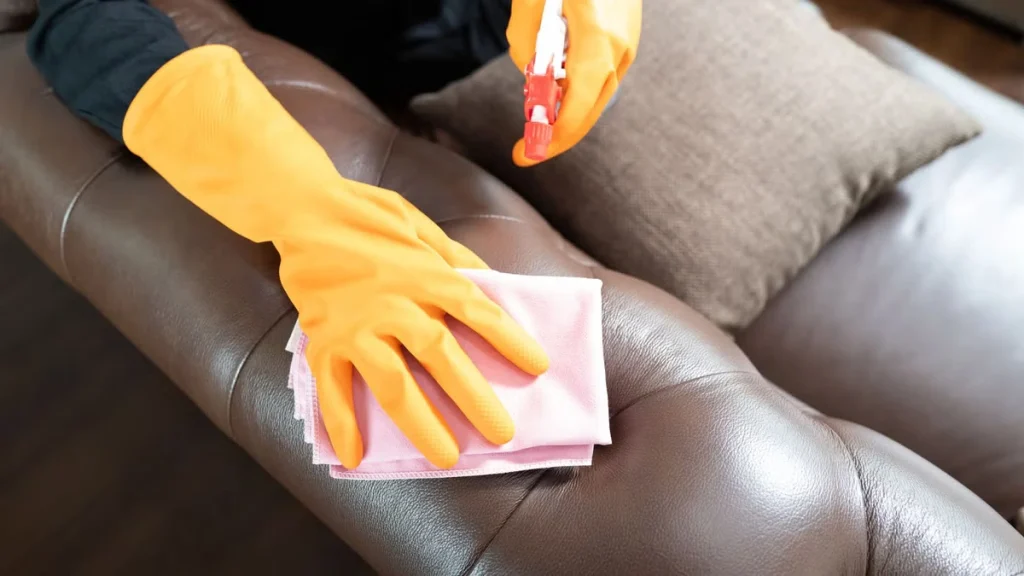
Avoid Harsh Chemicals
Bleach, ammonia, and alcohol-based cleaners strip away natural oils and damage the leather’s finish.
Use Minimal Water
Leather is not waterproof. Excess water can seep in and cause stiffness or mildew growth.
Clean Spills Immediately
Blot, don’t rub. Rubbing spreads stains and damages the surface.
Protect from Sunlight
Direct sunlight can fade leather and cause it to dry out. Keep your sofa away from windows or use curtains.
Dealing with Common Leather Sofa Problems
Removing Grease Stains
Sprinkle a small amount of cornstarch or baking soda on the grease spot. Leave for a few hours, then wipe clean.
Handling Ink Marks
Dip a cotton swab in rubbing alcohol and gently dab the ink mark. Do not rub. Follow up with a leather conditioner.
Fixing Scratches
For light scratches, gently rub the area with a chamois cloth. For deeper scratches, use a leather repair kit.
Homemade vs. Commercial Cleaners
Both homemade and commercial cleaners can work well for cleaning leather sofa if used correctly. Homemade solutions are budget-friendly and free from harsh chemicals. Commercial cleaners often contain conditioners that provide extra protection.
Maintenance Schedule for Leather Sofas
- Weekly: Dust and vacuum to remove surface dirt.
- Monthly: Wipe with a damp cloth and mild cleaner.
- Every 6 Months: Deep clean and condition the leather.
From my experience, sticking to this routine makes cleaning easier and keeps the sofa looking brand new.
Eco-Friendly Cleaning Options
Using natural cleaning solutions like vinegar, olive oil, and baking soda not only protects leather but also reduces your environmental impact. Plus, these options are safe for homes with pets and children.
When to Call a Professional
If your leather sofa has deep stains, cracks, or fading, a professional leather cleaning service can help restore it. They have specialized tools, pH-balanced products, and restoration techniques that are safe for all leather types.
Conclusion:
The best cleaning tips for a leather sofa are simple: use a gentle solution, minimal moisture, and regular conditioning. While a steam cleaner can be useful for fabric furniture, it’s not recommended for leather, as too much heat or moisture can damage the surface. Avoid harsh chemicals and direct sunlight to keep your sofa looking new. With proper care, your leather sofa can remain beautiful and comfortable for decades.
A well-maintained leather sofa isn’t just furniture—it’s a long-term investment. By treating it with the right methods instead of relying on a steam cleaner, you’ll enjoy lasting elegance and comfort.
FAQs About cleaning leather sofa:
Q1: How do you properly clean a leather couch?
To clean a leather couch, vacuum it first to remove dust, then wipe it with a soft cloth and a pH-balanced cleaner. Finish with a leather conditioner to keep it supple.
Q2: How often should a leather sofa be cleaned?
Lightly clean your leather sofa monthly and deep clean with conditioning every 6–12 months to maintain its texture and prevent cracks.
Q3: What are the don’ts in leather cleaning?
Avoid using bleach, ammonia, harsh detergents, or too much water. Don’t scrub aggressively or place leather in direct sunlight for long periods.
Q4: How do I maintain my leather couch?
Keep it dust-free, clean spills immediately, condition it twice a year, and protect it from heat and direct sunlight to extend its life.

Viola Moore is a dedicated home improvement blog author who has a passion for writing. She enjoys blogging about all sorts of topics, from interior design to landscaping and more! She loves the outdoors and spending time in nature with her family. She also likes to bake in her free time.


